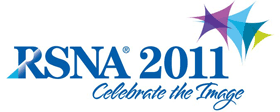
Abstract Archives of the RSNA, 2011
LL-CHS-SU7B
Pitfalls in the Use of Automatic Dose Control Systems in CT and Their Impact on Image Quality and Radiation Dose
Scientific Informal (Poster) Presentations
Presented on November 27, 2011
Presented as part of LL-CHS-SU: Chest
Patrick Stumpp MD, PhD, Presenter: Research grant, Bayer AG
Dieter Gosch PhD, Abstract Co-Author: Nothing to Disclose
Matthias Gawlitza MD, Abstract Co-Author: Nothing to Disclose
Hans Dieter Nagel, Abstract Co-Author: Consultant, Koninklijke Philips Electronics NV
Thomas Kurt Kahn MD, Abstract Co-Author: Nothing to Disclose
Insufficient knowledge of the functioning of ADC systems often yields dissatisfactory results with increased radiation dose or impaired image quality. We describe pitfalls in the daily use of ADC systems and show how to avoid them. Results of a study with 143 low-dose chest CTs are used to support the statements.
CT examinations using the ADC system DoseRight 2.0® (Philips Healthcare) were analyzed for possible sources of error when there were signs of increased radiation exposure or insufficient image quality. Additionally, data of 143 low-dose chest CT scans using an ADC system were retrospectively analyzed concerning constancy of the ADC performance and identification of possible reasons in cases of unexpected dose levels. These examinations were performed on 50 patients that were scanned at least twice on the same CT-scanner.
The most common mistakes were: incorrect arm position while scanning the localizer image, insufficient length of the localizer scan, metallic bodies (e.g. implants, shielding devices) within the scan region, incorrect centering (especially in table height), use of a non protocol-conform scan region and selection of an inadequate dose modulation technique. Dose can increase by around 8% for every cm centering error. For patients with metallic implants, dose can double. In 32 out of the 143 low-dose chest CT scans (mean effective dose: 1.45 ±0.64 mSv) unexpected dose levels were detected. Out of these 17 were due to an incorrect table height, 7 due to wrong arm positioning and 1 due to an excessive scan length. In 7 cases the reason for higher dose levels could not be identified.
ADC systems for CT require adequate training for technicians and radiologists, otherwise these systems can lead to an increased dose for the patient. When training is supported by a combination of short written instructions, rules for protocol implementation and advice for correct handling, the most common pitfalls (incorrect arm positioning and table height) can be avoided.
To adhere to the ALARA-principle in CT examinations, understanding of the functioning of ADC systems and of its potential pitfalls is highly relevant.
Stumpp, P,
Gosch, D,
Gawlitza, M,
Nagel, H,
Kahn, T,
Pitfalls in the Use of Automatic Dose Control Systems in CT and Their Impact on Image Quality and Radiation Dose. Radiological Society of North America 2011 Scientific Assembly and Annual Meeting, November 26 - December 2, 2011 ,Chicago IL.
http://archive.rsna.org/2011/11010928.html

